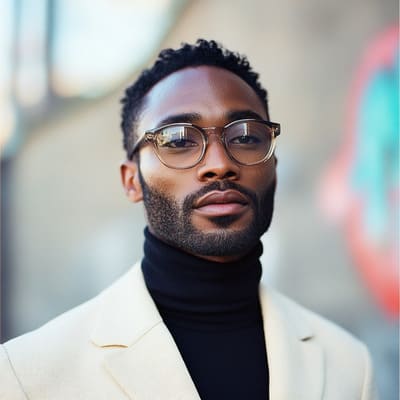The End of One-Size-Fits-All: Inclusive Sizing Revolutionizes Fashion
The fashion industry has been notorious for its one-size-fits-all approach. For decades, the standard clothing sizes have been centered around a single body type – usually tall, slim, and able-bodied. This meant that many people, especially those who didn’t fit this narrow standard, were often left with limited options when it came to fashion. However, in recent years, a much-needed revolution has been taking place in the fashion world – a movement towards inclusive sizing. Finally, the fashion industry is beginning to acknowledge that one size does not fit all and that it’s time to change the narrative. Let’s explore the end of one-size-fits-all and how inclusive sizing is revolutionizing fashion.
A Shift Towards Inclusivity
In the past, fashion brands designed and produced for a specific body type. This resulted in a lack of options for those who didn’t fit within this narrow definition of beauty. However, as society continues to push for more diversity and inclusivity, the fashion industry has been forced to confront its limited definition of beauty. Brands have now realized that there is a massive market for inclusive sizing, and they cannot afford to ignore it any longer.
The inclusive sizing movement has gained significant momentum in recent years, thanks in part to the rise of social media and body positivity campaigns. Consumers, particularly women, are using their voices to demand more diversity in sizing and representation in the fashion industry. As a result, many fashion brands have started to extend their size range to include plus sizes, petite sizes, and options for people with disabilities.
The Impact of Inclusive Sizing
The impact of inclusive sizing on the fashion industry has been significant. It has not only brought much-needed diversity to the industry but has also provided a sense of empowerment for those who have long been marginalized. Inclusive sizing means that people of all shapes, sizes, and abilities can now find clothes that fit and make them feel confident and beautiful.
Moreover, inclusive sizing has also had a positive effect on the overall body positivity movement. By showcasing a diverse range of body types, the fashion industry is challenging the notion of a “perfect” body and promoting self-acceptance and self-love. In a world where unrealistic beauty standards are constantly pushed upon us, this is a much-needed change.
Challenges and Setbacks
Despite the progress made towards inclusive sizing, several challenges and setbacks remain. For one, there is still a lack of diversity in models used by fashion brands. Many brands are still using tall, thin, and able-bodied models, even when offering inclusive sizing. This perpetuates the idea that there is one “acceptable” body type, which goes against the very core of the inclusive sizing movement. Furthermore, some brands have been accused of “sizing up” their clothes instead of truly designing for a diverse range of bodies.
There is also a financial aspect to consider. Extending size ranges and offering options for people with disabilities can be costly for brands. Many smaller, independent brands may not have the resources to invest in inclusive sizing, making it even more challenging for people of all sizes and abilities to find fashionable and affordable clothing.
The Road Ahead
The push for inclusive sizing is far from over. While we have seen significant progress over the years, there is still a long way to go. It’s crucial for the fashion industry to continue its efforts in promoting diversity and inclusivity. This includes using a more diverse range of models, ensuring that clothes are designed for a variety of body types, and making inclusive sizing accessible and affordable for all.
In Conclusion
The end of one-size-fits-all in the fashion industry is a significant step towards inclusivity and diversity. It’s time for fashion brands to recognize that beauty comes in all shapes, sizes, and abilities and that there is no “right” or “wrong” body. By offering inclusive sizing, the fashion industry is not only making a positive impact on people’s lives; it’s also sending a powerful message that everyone deserves to feel confident and beautiful in what they wear.



